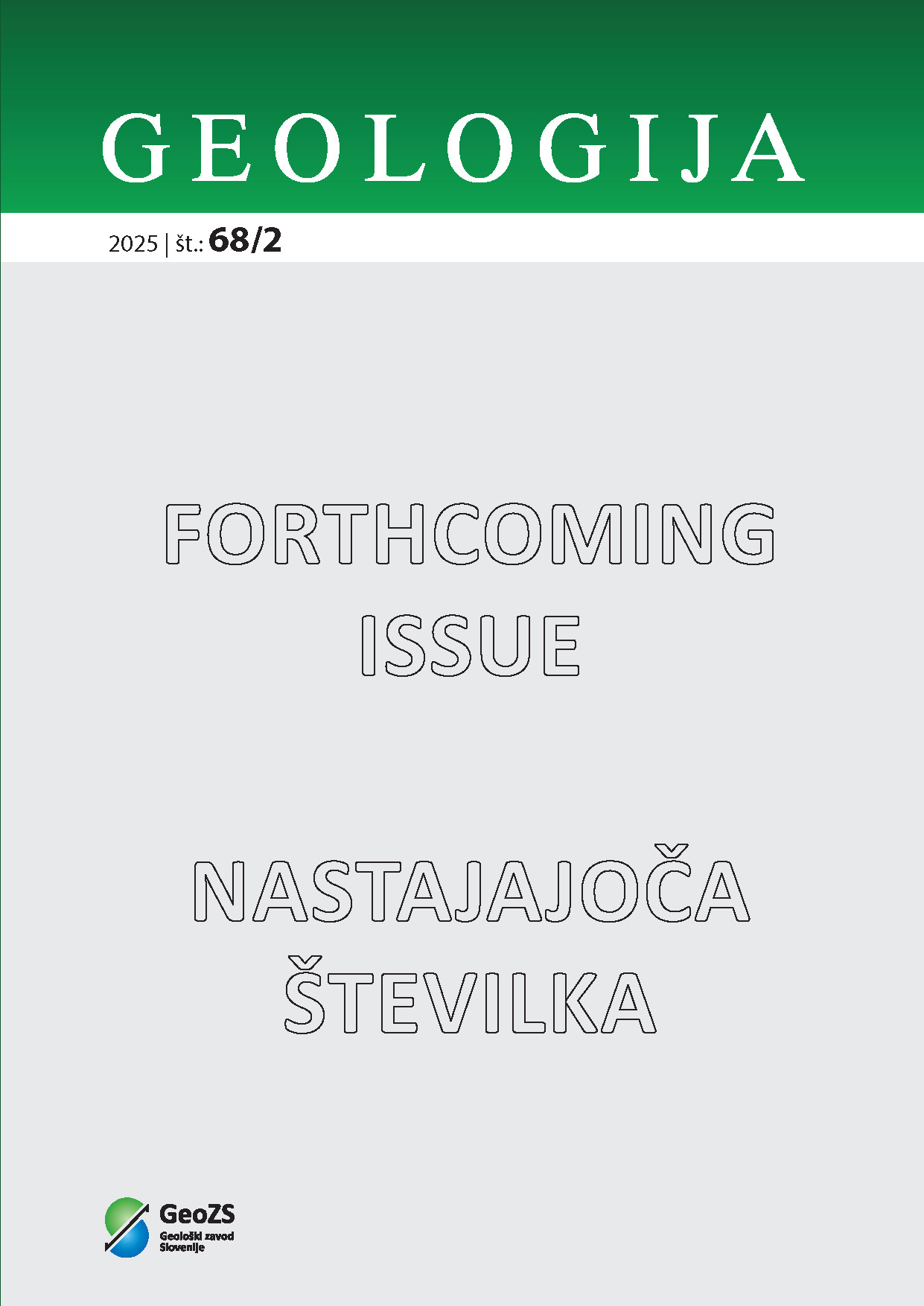Evaluation of cut slope stability in the Lesser Himalaya of Nepal
DOI:
https://doi.org/10.5474/geologija.2025.006Abstract
A spatial inventory of cut slopes in the central and western Lesser Himalaya of Nepal was prepared and characterised to evaluate their stability. The stability of these cut slopes is governed by the geotechnical properties of rock/soil together with slope geometry, groundwater conditions and human interventions. Numerous cut slope failures were observed in areas where slope geometry is modified for engineering developments such as roads, dams, powerhouses, industrial development, etc. Two modelling sites were evaluated using the Limit Equilibrium Method (LEM), Finite Element Method (FEM), and Particle Finite Element Method (PFEM). Pre-failure analyses using LEM and FEM under dry and saturated conditions revealed that the stability of the Lesser Himalayan hillslopes with considerable soil thickness is predominantly controlled by the depth of groundwater level (GWL). Slopes remain stable with a factor of safety (FoS)>1.3 when the GWL lies below 7 m from the surface and gradually become unstable as it approaches the surface. This trend for both slopes confirms that elevated groundwater during the rainy season is the major cause of frequent cut slope failures in the Himalayan regions. The comparison of FoS from LEM and Strength Reduction Factor (SRF) from FEM showed a strong cross-correlation (90–99 %), revealing minimal variation which affirmed the validity of the adopted modelling techniques used in this study. Post-failure simulations of these sites were further analysed using an innovative approach, the robust PFEM modelling technique, to compute the dynamic failure mechanism. Sensitivity analysis of both modelled sites showed that friction angle and cohesion are the most significant parameters for slope stability evaluation. Moreover, forward and back analyses indicated that computed results are in good agreement, thus depicting reliability and performances along with the model validation.

